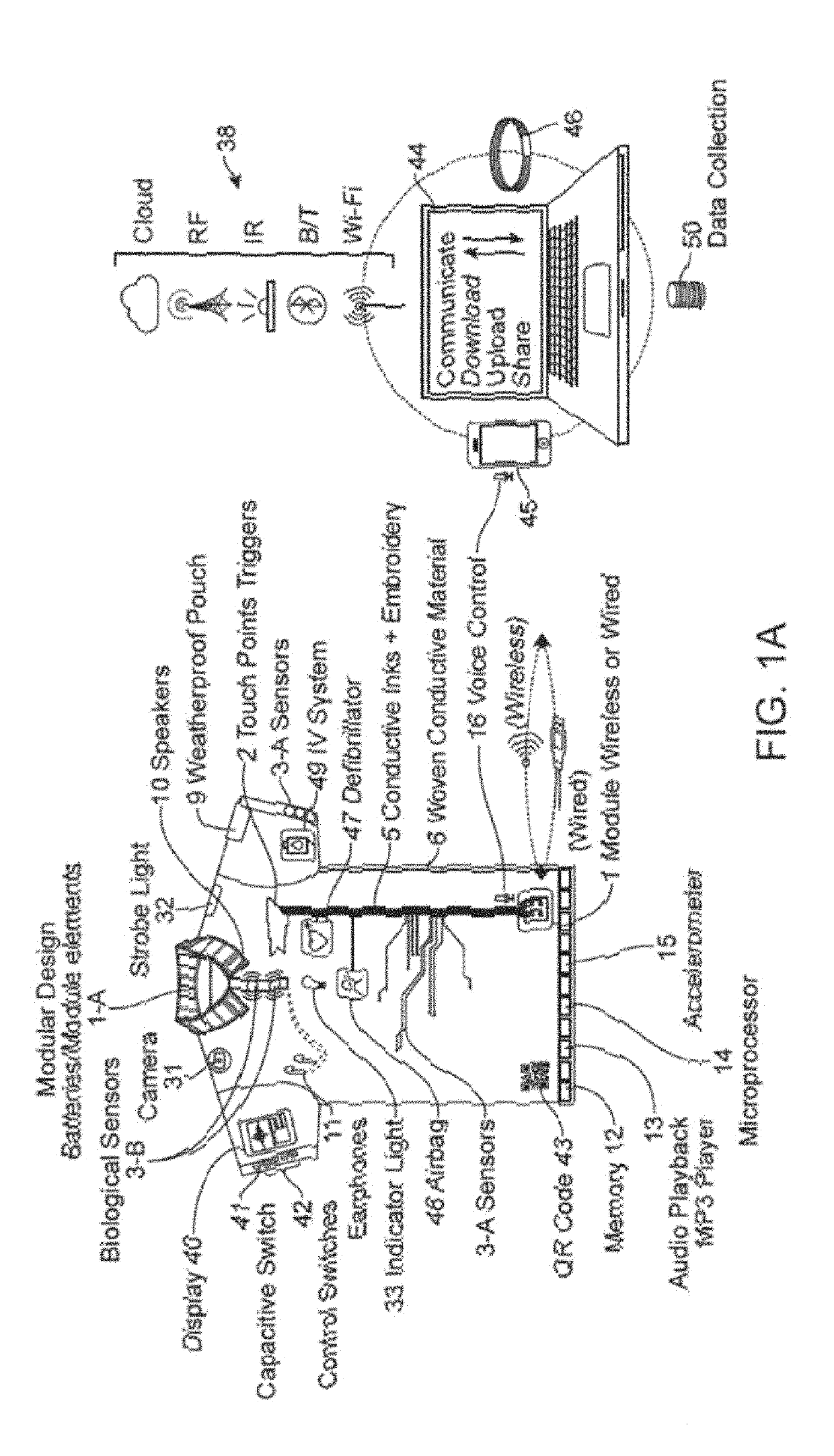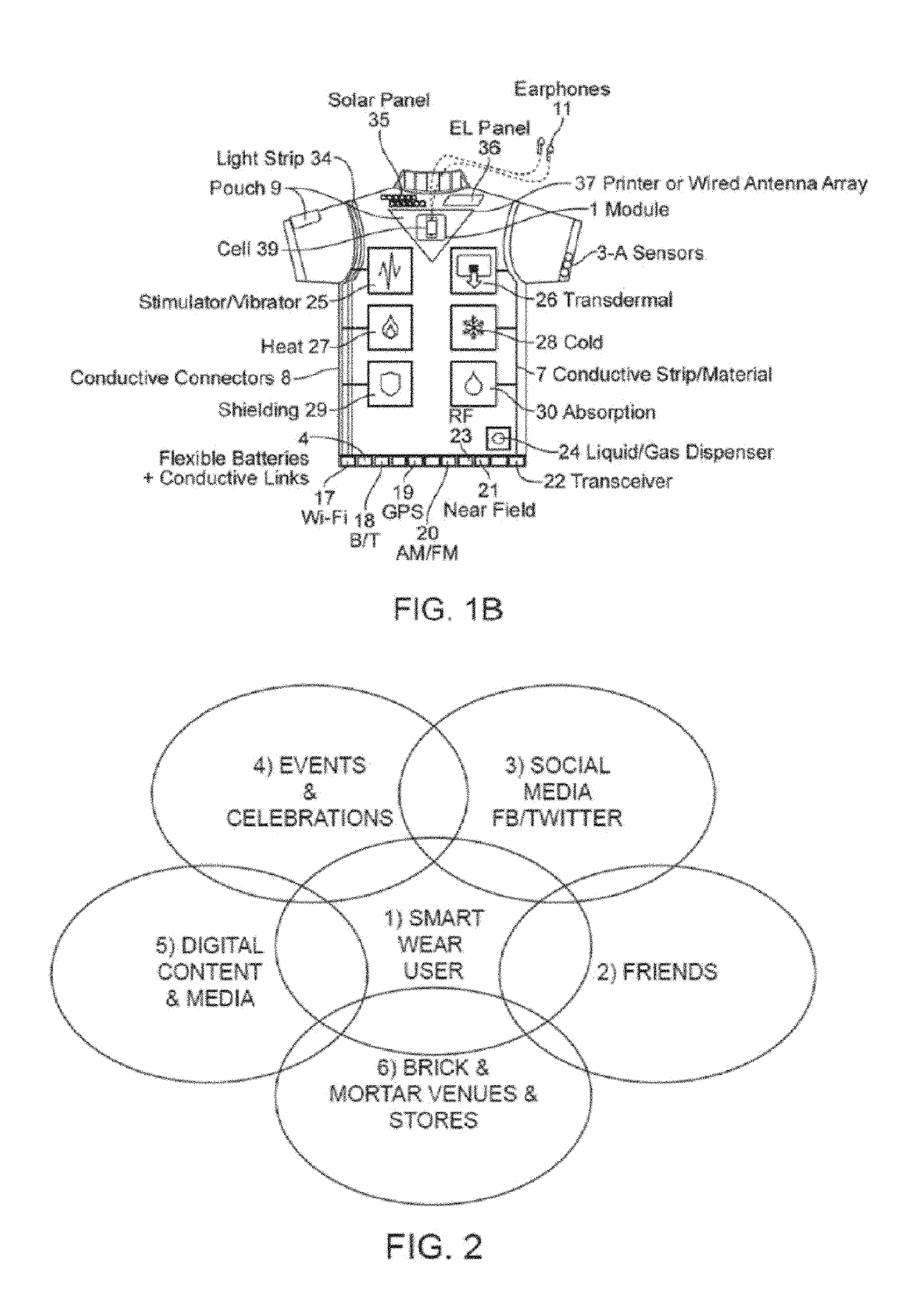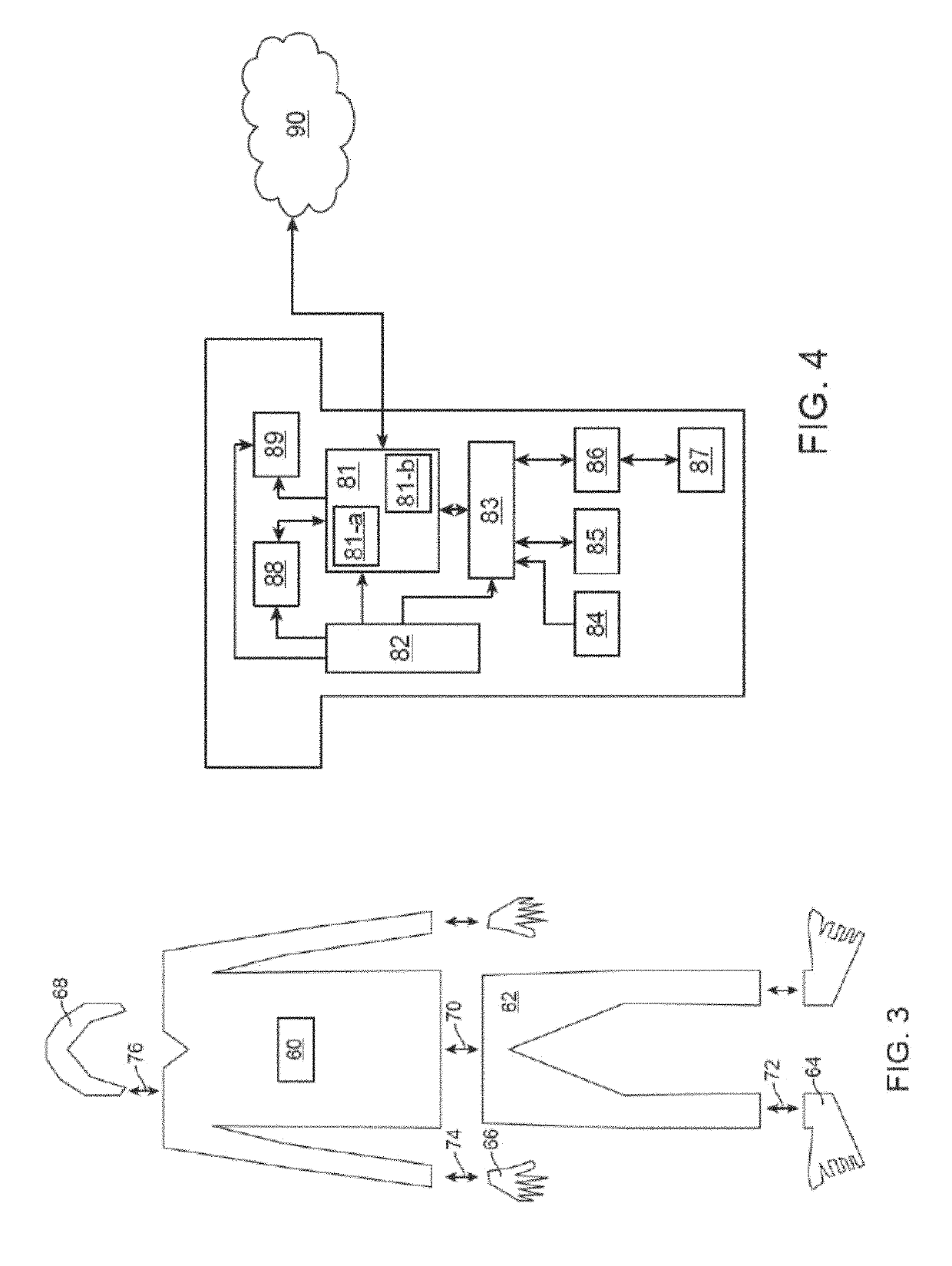Physiological monitoring garments
a technology of physiological monitoring and garments, applied in the field of wearable equipment, can solve the problems of cumbersome and inconvenient use of cardiovascular and other types of health monitoring systems, difficult or impractical long-term monitoring, and relatively inaccurate monitors, so as to increase the adhesion and compatibility, and increase the resistance to washing processes
- Summary
- Abstract
- Description
- Claims
- Application Information
AI Technical Summary
Benefits of technology
Problems solved by technology
Method used
Image
Examples
example 1
Garments that Detect Respiration
[0486]Garments may be adapted to detect respiration, and in particular, regional respiration. Such devices may be used at the request of a medical professional, or by anyone who wishes to monitor respiration. A respiration-monitoring device may be adapted for the continuous and accurate monitoring of respiration, including monitoring of respiration in one or more regions. A complete and accurate measurement of several respiratory parameters (described below) may be made using a plurality of stretchable conductive ink traces (patterns) arranged in a wavy pattern (e.g., a ‘zig-zag’ pattern, a sinusoidal pattern, sawtooth pattern, etc.) arranged in different regions of the garment so that they are positioned about a wearer's torso. Regions including lengths of stretchable conductive ink may include: the anterior (front) part of a shirt, the posterior (back) part of a shirt; each or either of the two lateral sides of a shirt, etc. Sub-regions within these...
example 2
Electrocardiogram (ECG) Measuring Garments
[0514]Also described herein are garments that may be used to effectively and continuously monitor electrocardiogram (ECG) signals. For example, a garment may be adapted to measure signals by including pairs of redundant traces between which the apparatus (e.g., garment, control / sensing module, etc.) may switch. In some variations the SMS and / or a sensor module may determine which set of electrodes between the redundant multiple electrodes to use in detecting a particular lead for an ECG. FIGS. 20A-20B, 21A-21B, and 21C-21D illustrate garments configured to measure ECGs. Each of these garments includes redundant leads (two or more) where each of the redundant leads can detect a signal from an electrode that may be used to determine an ECG signal for that lead.
[0515]The electrodes used to detect ECG signals may be formed of the stretchable conductive ink composites described herein. In some variations, the electrodes are printed, applied or fo...
PUM
| Property | Measurement | Unit |
|---|---|---|
| conductive | aaaaa | aaaaa |
| length | aaaaa | aaaaa |
| elastic | aaaaa | aaaaa |
Abstract
Description
Claims
Application Information
 Login to View More
Login to View More - R&D
- Intellectual Property
- Life Sciences
- Materials
- Tech Scout
- Unparalleled Data Quality
- Higher Quality Content
- 60% Fewer Hallucinations
Browse by: Latest US Patents, China's latest patents, Technical Efficacy Thesaurus, Application Domain, Technology Topic, Popular Technical Reports.
© 2025 PatSnap. All rights reserved.Legal|Privacy policy|Modern Slavery Act Transparency Statement|Sitemap|About US| Contact US: help@patsnap.com



